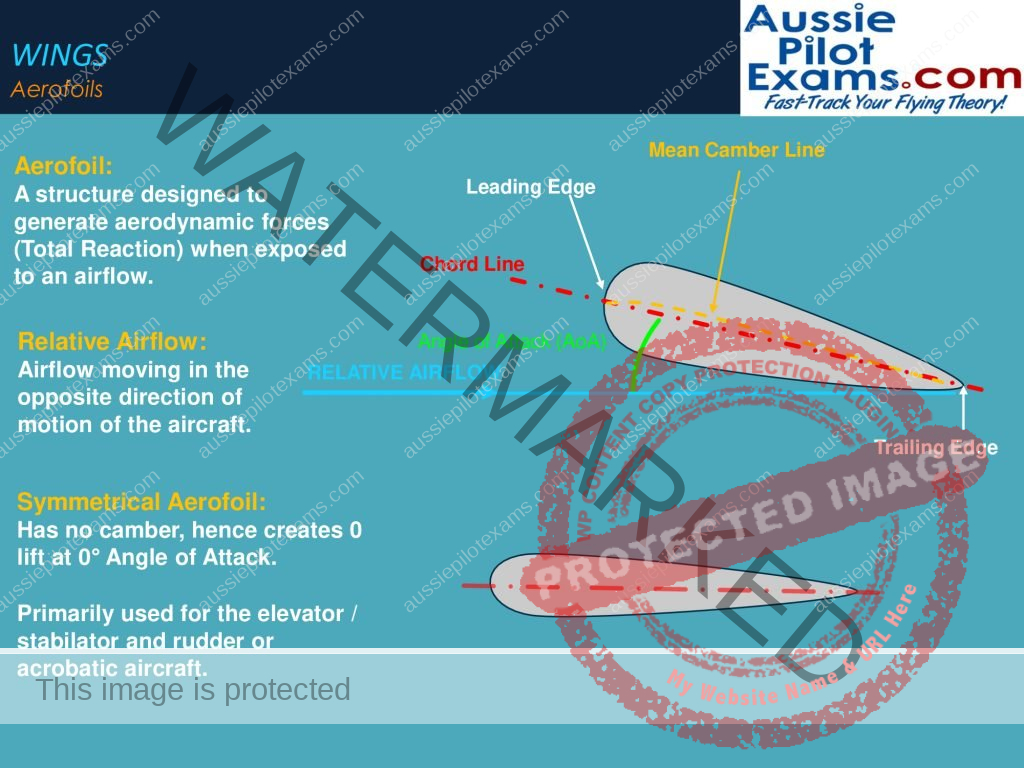Back to: RPC | RPL | PPL
An aerofoil is the name given to those components of an aircraft whose purpose it is to generate and/or vary the aerodynamic force required to enable the aircraft to fly, and to enable it to be controlled by the pilot. These components include the wings and wing flaps, horizontal and vertical stabilizers, elevator, rudder, and ailerons.
The relative airflow is the direction of the oncoming airflow before it is affected by the passage of the aircraft through the air, relative to the direction of movement of the aircraft.
The leading edge is the most forward point on the forward curvature of the wing. The trailing edge is the most rearward point of the wing. The chord line is a straight line joining the leading edge and the trailing edge of the wing.
The chord line separates the upper and lower surfaces of the wing. A symmetrical wing is one who’s upper and lower surfaces have the same curvature, and a cambered wing is one where the curvature of the upper surface is greater than that of the lower surface.
The mean camber line is a line joining the leading edge and the trailing edge of the wing, and is equidistant from the upper and lower surfaces of the wing. On a symmetrical wing this line is coincidental with the chord line, and on a cambered wing it is on the upper surface side of the chord line.
Maximum thickness is determined by the length of a line drawn between the upper and lower surfaces of the wing, at right angles to the chord line, at a point where the distance between the upper and lower surfaces is at a maximum.


